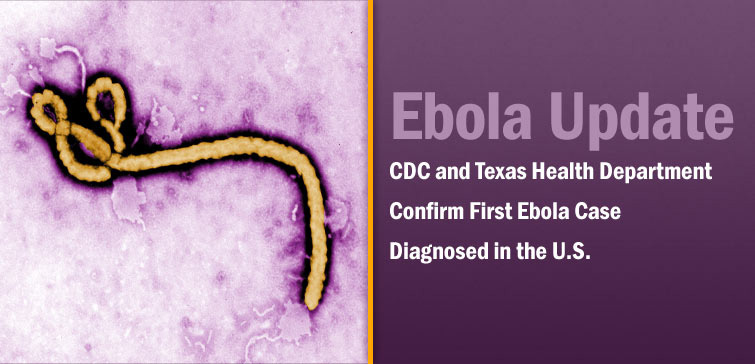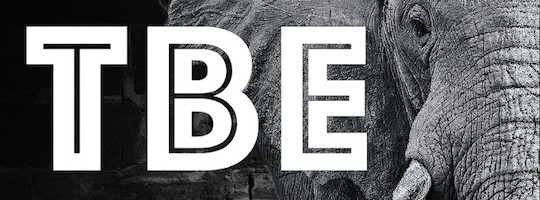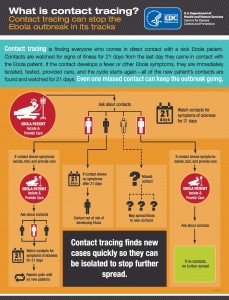Ebola has hit the United States by way of a traveler from Liberia. According to the CDC, everything is under control.[read_more]

(Graphic per CDC)
Who and where
[quote font=”0″ color=”#001c5e”]“Thomas Eric Duncan left Monrovia, Liberia, on Sept. 19 aboard a Brussels Airlines jet to [Brussels] After layover of nearly seven hours, he boarded United Airlines Flight 951 to Dulles International Airport in northern Virginia. After another layover of nearly three hours, he then flew Flight 822 from Dulles to Dallas-Fort Worth International Airport, the airline confirmed.” Source.[/quote]
[quote font=”0″ color=”#001c5e”]“Duncan first felt sick Sept. 24 and went to the hospital in Dallas. But staff didn’t suspect Ebola then, so he went home. He came back by ambulance on Sept. 28. He’s now critically ill in isolation in the hospital’s intensive care unit.” Source.[/quote]
[quote font=”0″ color=”#001c5e”]“Mr. Duncan, the first person to develop symptoms outside Africa during the current epidemic, had direct contact with a woman stricken by Ebola on Sept. 15, just four days before he left Liberia for the United States, the woman’s parents and Mr. Duncan’s neighbors said . . . Turned away from a hospital for lack of space in its Ebola treatment ward, the family said it took Ms. Williams back home in the evening, and that she died hours later, around 3 a.m.” Source.[/quote]
Incubation and transmission
[quote font=”0″ color=”#001c5e”]“The incubation period, that is, the time interval from infection with the virus to onset of symptoms is 2 to 21 days. Humans are not infectious until they develop symptoms. First symptoms are the sudden onset of fever fatigue, muscle pain, headache and sore throat. This is followed by vomiting, diarrhoea, rash, symptoms of impaired kidney and liver function, and in some cases, both internal and external bleeding (e.g. oozing from the gums, blood in the stools).” Source.[/quote]
The CDC and others brief the public
Dr. Thomas Frieden director of the CDC has claimed that Duncan first exhibited symptoms around September 24th, that Duncan went to the hospital on the 26th where he was sent home with antibiotics, only to return on the 28th.
[quote font=”0″ color=”#001c5e”]Per NPR: “But passengers on the plane with the man were not exposed to Ebola, Frieden said. ‘There is zero risk of transmission on the flight. He was checked for fever before getting on the flight.’”[/quote]
[quote font=”0″ color=”#001c5e”]Frieden went on to state “[I] have no doubt that we will control this . . . importation of ebola so that it does not spread widely in this country.”[/quote]
Dr. David Lakey the Commissioner of the Texas Department of State Health Services, in addition to downplaying the infectiousness of ebola and explaining that “top notch care” was being provided to Duncan also stated “this is not west Africa . . . the chances of it being spread are very, very slim.”
Contact tracing and its gaps
It is likely that those treating Duncan now are able to take sufficient steps to prevent against further spread from Duncan.
The problem is for those who came into contact with Duncan shortly after the onset of symptoms. The system for identifying exposure and preventing further transmission is referred to as contact tracing.
The CDC has provided the following flow chart to understand contact tracing, which involves identification, and monitoring of exposed individuals.
There are two significant gaps in this process dependent on the patient. The first problem is in determining when the symptoms start, the second is in identifying with whom the patient has contact after exhibiting symptoms.
Duncan knowingly had significant contact with a person who had advanced stage ebola. Duncan then entered a plane within days. We do not know when he bought his plane tickets. If the tickets were purchased within days of the flight, chances are he knew he had ebola or that it was likely he had ebola and was trying to get to the U.S. where he could get better treatment. Even if he had purchased the tickets far in advance, he would not want to be stopped from coming to the U.S. so he would avoid any admission of contact with a sufferer of ebola. In both instances, he purposefully hid his experience in order to make it across the Atlantic.
UPDATE: Shortly after publishing, the AP started reporting that Liberian officials will be prosecuting Duncan for having lied on his exit forms about exposure to ebola.
If he was willing to hide his contact with ebola, one can easily imagine he might not be forthright about the timing of the onset of symptoms, or with whom he came into contact.
Additionally, even if he is being completely honest, there is no way to verify that he remembers everyone he came into contact with after the onset of symptoms.
Incentives for the government to tell the whole truth
Public trust in the federal government is so dismally low that telling the whole truth and rebuilding some public trust is not worthwhile. Essentially the whole truth likely is:
- No one is certain when Duncan started developing symptoms.
- No one is certain of all the people Duncan was in contact with after contracting symptoms (as exemplified in the Contact Tracing flow chart as a “Missed Contact”).
So instead, the remaining incentive is to tell most of the truth to prevent a panic for two reasons. First, panic is bad public relations and reflects poorly on the agencies and public officials involved. Second, and more importantly, in order to facilitate the cooperation of those on the contact list it needs to appear as if they have complete control of the situation.
Those on the contact list are responsible for their own compliance. This is to ensure that they are not deprived of freedom. If those on the contact list suffered severe deprivations of freedom, then reporting and cooperation of future people exposed to disease will be severely hindered leading to more spread of infectious diseases.
After all the assurances from Frieden and the Texas officials that this is nothing to worry about, there was the implicit threat from Zachary Thompson, the director of the Dallas County Health and Human Services Department, that for those contacts who do not comply with the protocols for reporting, “more stringent guidelines will be put in place.”
I know public officials do not want to create a panic, but we are not receiving the whole story…

